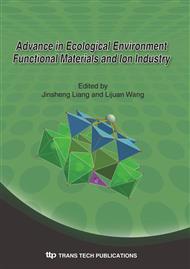p.61
p.67
p.71
p.75
p.81
p.87
p.93
p.99
p.105
Fabrication and Mechanical Properties of Double-Shell Thermal Energy Storage Microcapsules Applied as Environmental Temperature-Controlling Materials in Building
Abstract:
The aim of the present work was to fabricate heat energy storage microcapsules, which could be used in indoor-wall materials as environmental temperature-controller. Melamine formaldehyde resin (MF) double-shell structure microcapsules were fabricated and the mechanical properties of shell were investigated. The average diameter of microcapsules was in the range of 5-10 μm, and the globular surface was smooth and compact. The mechanical properties of shell were evaluated through observing the surface morphological structure change after pressure by means of scanning electron microscopy (SEM). The results showed that a yield point was found both on single and double shell, and when the press was beyond the point the microcapsules showed plastic behavior. In addition, the mechanical intensity of double-shell microcapsules was better than that of single shell. Analysis of DSC indicated that the phase change temperature was not affected by the double –shell structure.
Info:
Periodical:
Pages:
81-86
Citation:
Online since:
January 2010
Authors:
Price:
Сopyright:
© 2010 Trans Tech Publications Ltd. All Rights Reserved
Share:
Citation:


